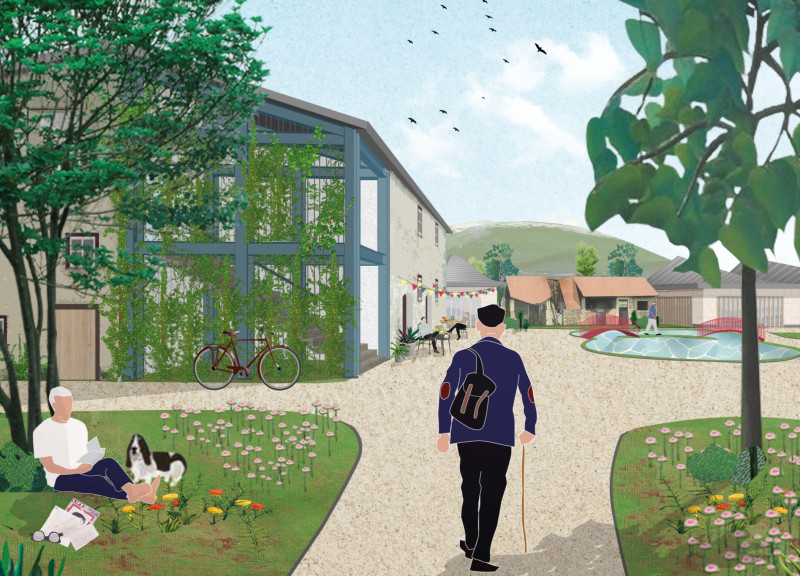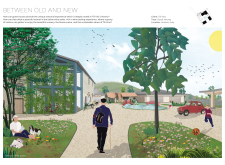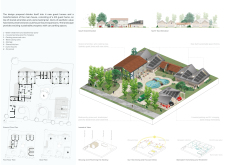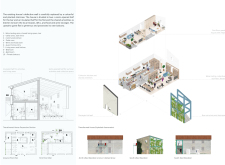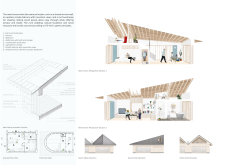5 key facts about this project
The four guest houses are arranged in a layout that facilitates both privacy and social interaction. Each guest house includes essential amenities, such as living areas, kitchens, and bathrooms, designed for comfort and utility. The existing main house is renovated to enhance community spaces, featuring a communal kitchen and wine-tasting area that foster a connection among guests. This design approach addresses the needs of visitors seeking both personal solace and opportunities for socialization.
Sustainability and regional identity are core aspects of this project. The use of local materials, such as wood cladding and natural insulation panels, reflects a commitment to ecological design principles. Additionally, the incorporation of solar energy solutions, water treatment systems, and biodiversity ponds underscores a holistic approach to resource management. These elements are designed not only to limit environmental impact but to enhance visitors’ interaction with the natural environment.
The architectural design includes features that emphasize connection to place. The architecture integrates with the landscape through the strategic placement of windows and balconies, allowing for expansive views of the surrounding vineyards and hills. The design also incorporates a biodiversity pond, which serves as both a functional element for the landscape and a visual asset.
Unique to this project is the focus on blending modern architectural elements with traditional materials and techniques. This juxtaposition not only honors the cultural heritage of Umbria but also sets a precedent for sustainable tourism architecture. By creating an environment that encourages exploration and utilizes local resources, Tili Vino exemplifies a responsible and forward-thinking architectural practice.
For further insights into the Tili Vino project, including detailed architectural plans, sections, and design iterations, readers are encouraged to explore the project's complete presentation. This examination will provide a deeper understanding of the innovative architectural ideas and technical approaches that characterize this project, showcasing its contributions to sustainable architecture in a historical context.


